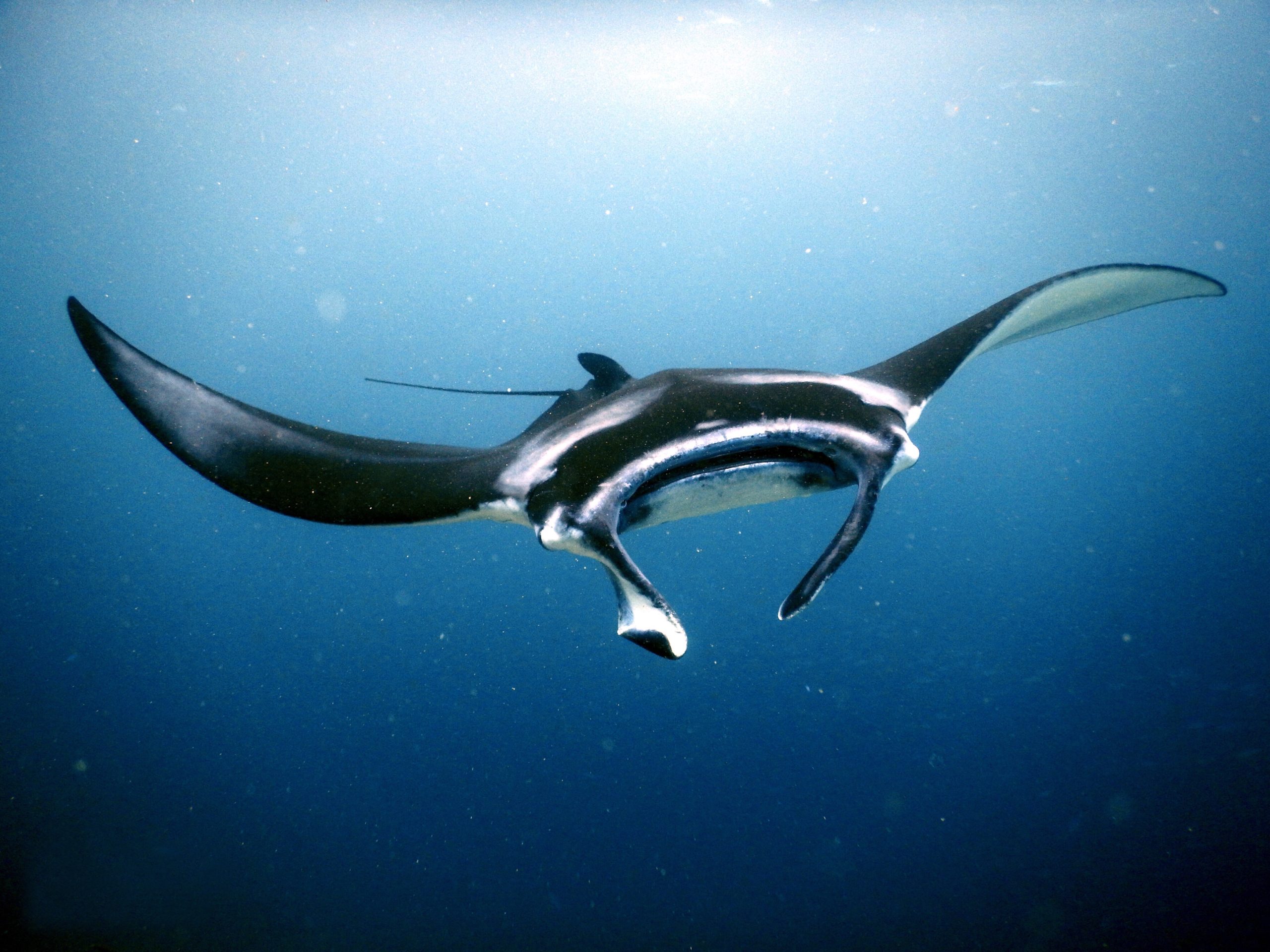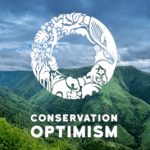A picture tells a thousand words… well, in this case, each picture tells a story of conservation optimism. From devils to manta rays, we have been collecting photos from conservationists all around the world to inspire us as conservation optimists.
These photos are on display at the 29th International Congress for Conservation Biology (ICCB 2019) in Kuala Lumpur, in a Conservation Optimism photography exhibition co-hosted by the Society for Conservation Biology Malaysia Chapter (SCB-Malaysia) and Turtle Conservation Society of Malaysia (TCS). In case you aren’t attending, we will be posting these photos and their stories throughout the summer!
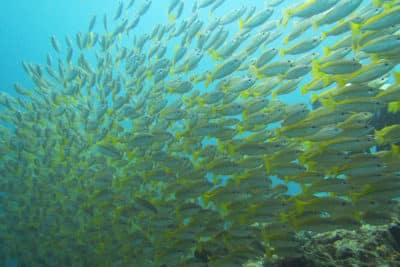
This story showcases Marine Protected Area as an effective tool in marine conservation. Edmund Lau Chai Ming, who works for Reef Check Malaysia, wants the world to know about the work conducted by Kevin Hiew, who headed the Marine Park Section, Department of Fisheries and set up marine parks around the country.
Edmund explains: “This was a mammoth task considering the challenges faced internally within the department, state and federal government as well as fishermen whose livelihoods are affected. However, with the declining state of the worldwide marine resources, this step was necessary to ensure sustainability and protection of the marine ecosystems.”
Despite facing resistance, Kevin managed to help set up 42 Marine Protected Areas (MPAs) proving that “sometimes it’s necessary to swim against the current to get to the other side.” Those MPAs have proven to be crucial tools in protecting Malaysia’s marine biodiversity.
Edmund’s photo is a reminder of the power of those MPAs, as this school of snappers “would have likely been snapped away if the no-take policy hadn’t been implemented as part of the newly established MPAs.”
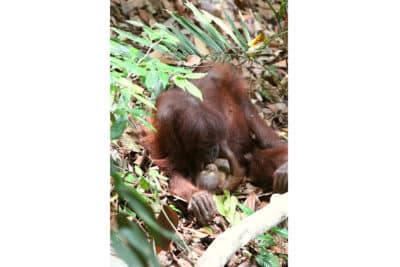
Peter Ong has the goal to “photograph all of Malaysia’s primate species”. He has a particular interest in covering stories around the illegal pet trade in primates, as he has seen first-hand how it can result in families being torn apart. He wants his photos to remind people that: “To get them the cute baby orangutan or lutung, the mother has to be killed.”
However, Peter is still hopeful, as he has seen rescued orphans being rehabilitated and reintroduced into the wild. He says: “With a lot of patience and care, these orphans can hopefully find their own way in the rainforests again.”
Peter’s photo is of Hope, who was rescued as an orphan from being shipped off as part of the illegal exotic animal trade. After being rehabilitated in the Sepilok Rehabilitation Centre, Hope was successfully released into the wild where she was one of two such released females to successfully mate and conceive in the wild. Here she is with her baby, Doris.
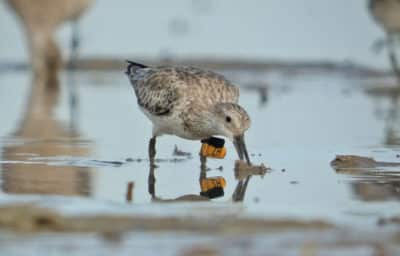
Nur Munira Azman has been studying the distribution and abundance of migrating shorebirds in Teluk Air Tawar-Kuala Muda Coast (Important Bird Area), Penang since 2017 and she coordinates the Shorebirds Peninsular Malaysia Project. Every weekend from September to April, she walks around the coastal area there with her husband to observe and record the shorebird species present.
Munira was amazed one day to find a tagged endangered great knot (see photo) from Kamchatka, Peninsular Russia! She says: “What a small world we live in! The shorebirds are truly world ambassadors.
“I plan to share our knowledge and findings with the local community in the future, as I realized that some of them do cherish this treasure as one of attractions in their own backyard. Shorebirds are facing threats like habitat destruction and unsustainable coastal development, so we need people to understand that without effective conservation action, their population trends are decreasing at a fast rate.”

ake Krauss’s story brings us to Australia. “Imagine walking in a forest around Sydney in 70 years and seeing Tasmanian devils running around, even though it’s been millennia since devils have walked mainland Australia. These marsupials will hopefully be widespread, helping to check the cats and foxes and maintain the ecosystem in balance.”
Jake’s research in reintroductions is looking into what are the best ways to bring back iconic and important marsupials, such as this Tasmanian devil, to mainland Australia. He explains that: “If successful, in the near future devils will be better integrated into continental Australia, outcompeting cats and foxes to reduce the impact of these invasive animals on native Australian wildlife.” Jake strongly believes that “the future that happens, is up to all of us,” so we should all do our part to make a difference.
‘”Unless someone like you cares a whole awful lot, nothing is going to get better; it’s not.”
The Lorax, Theodore Geisel/Dr Seuss
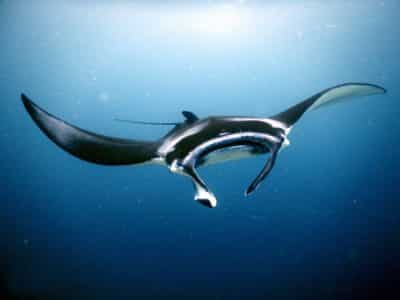
One of the Wildlife Conservation Society’s (WCS) focal species is manta rays, which have been threatened by overfishing and illegal trade in Indonesia. They’re primarily targeted for their gills, which are traded internationally for sale in Chinese Medicine markets.
In 2014, the Indonesian government declared manta rays a fully protected species. Since then, WCS has been working with government and NGO partners to implement this law, by supporting marine patrols in hunting hotspots, arrests and prosecutions of high-level illegal wildlife traders, and engagement and livelihood-focused interventions within fisher communities.
Hollie Booth reports that “sustainable fisheries cooperatives have been established, with more than 50 ex-manta ray fishers committed to stop targeting mantas in two fishing villages. Local and national-level government agencies have also shown a strong commitment to protecting these species, with over 20 high-level illegal manta ray traders have been arrested since 2014.” She strongly believes that the project “has resulted in measurable conservation impact, with large, significant declines in manta ray landings in our two project sites.”

